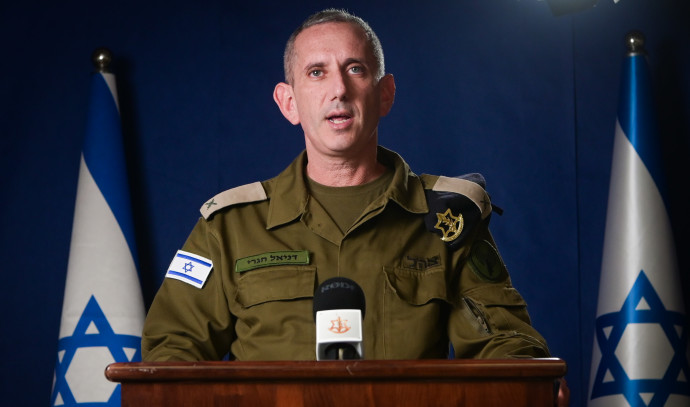In a statement on Friday, the Israel Defense Forces (IDF) explained the series of errors that led it to mistakenly kill seven World Central Kitchens aid workers on Monday night.
According to the IDF, there were seven different action points in the incident regarding attacking the three WCK.
The drone unit saw multiple suspicious actions.
The drone unit said it saw a Hamas terrorist climb onto one of the trucks and fire in the air at what it called action point two.
According to the IDF, this tactic is frequent and is used by Hamas to send signals to other Hamas fighters in the area regarding his position.
At action point three, the convoy split up.
At action point four, the convoy entered a hangar, which obscured which vehicles might be going in and out and who might be in the vehicles compared to who was in the vehicles before entering the hangar.
In the first four action points, the IDF drone unit refrained from attacking the aid trucks because they questioned their commanders and were ordered by Division 162 Brig. Gen. Itzik Cohen not to, despite a suspicion of Hamas terrorists being involved.
At the fifth action point, the aid trucks had left the hangar.
IDF tried to call aid workers, was unable to reach them
As the events developed, the IDF tried to call the aid workers involved in the field and was unable to reach them.
Next, the IDF called the WCK headquarters. The WCK headquarters tried to call its own aid workers in the field, but they did not answer.
When vehicles left the hangar, the IDF drone unit believed that these were not the same vehicles and thought that these were Hamas vehicles.
According to the IDF, attacking the trucks after all of this was a mistaken identity issue but could not lead to criminal charges.
Accordingly, the drone unit believed the order not to attack no longer applied.
Around a kilometer later, the drone unit believed it had the right to engage the trucks.
Also, the drone unit had thermal imaging that did not see the WCK aid worker sign posted on the roof of the trucks.
When the drone unit attacked three times, it believed that the “coast was clear” completely to attack what it thought were clearly Hamas targets.
The IDF said that even though this could not be a criminal issue, a colonel and major involved in the attack were being fired from their positions as they still could have refrained from attacking based on a general worry that it could still be aid workers.
Likewise, Cohen and his commanding officer, Maj. Gen. Yoel Finkleman was censured for not having standing orders, which would have infused even greater restraint within their troops.
Further, the IDF said that only an attack on the first truck could be somewhat more justified because only there had the drones positively identified Hamas terrorists, whereas the suspicions about Hamas terrorists in the second and third trucks were based more on conjecture regarding the character of the trucks themselves.
Regarding identifying the trucks themselves, the IDF said that a source of complexity was the Toyota pickup trucks involved, which are usually a characteristic of Hamas and were not typically used by the aid workers.
The IDF was uncertain about what happened to any of the Hamas terrorists who might have weaved in or out of the incident.
The IDF said it had presented the findings to the WCK and was still answering questions, and it was not sure how the organization would respond.
Following the incident, the WCK suspended all operations in the Gaza Strip and appeared to be leaning toward permanently ending all operations.

